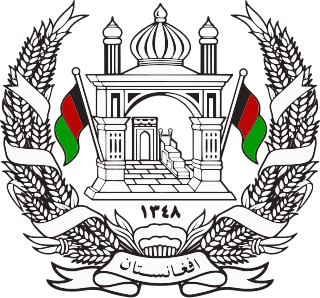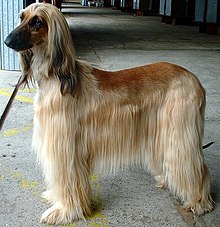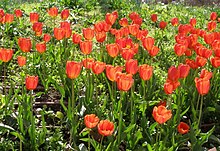
Afghanistan, officially the Islamic Emirate of Afghanistan, is a landlocked country located at the crossroads of Central Asia and South Asia. Referred to as the Heart of Asia, it is bordered by Pakistan to the east and south, Iran to the west, Turkmenistan to the northwest, Uzbekistan to the north, Tajikistan to the northeast, and China to the northeast and east. Occupying 652,864 square kilometers (252,072 sq mi) of land, the country is predominantly mountainous with plains in the north and the southwest, which are separated by the Hindu Kush mountain range. Kabul is the country's largest city and serves as its capital. According to the World Population review, as of 2023, Afghanistan's population is 43 million. The National Statistics Information Authority of Afghanistan estimated the population to be 32.9 million as of 2020.

The organized International Red Cross and Red Crescent Movement is a humanitarian movement with approximately 16 million volunteers, members, and staff worldwide. It was founded to protect human life and health, to ensure respect for all human beings, and to prevent and alleviate human suffering.

Pashto is an Eastern Iranian language in the Indo-European language family, natively spoken in northwestern Pakistan, southern and eastern Afghanistan, and some isolated pockets of far eastern Iran near the Afghan border. It has official status in Afghanistan and the Pakistani province of Khyber Pakhtunkhwa. It is known in historical Persian literature as Afghani.

The national flag of Saudi Arabia, also known as the al-Alam, is a green background with Arabic inscription and a sword in white. The inscription is the Islamic creed, or shahada: "There is no deity but God; Muhammad is the Messenger of God". The current design has been used by the government of Saudi Arabia since 15 March 1973.

The national flag of the Islamic Emirate of Afghanistan, adopted on 15 August 2021 following the Taliban's victory in the 2001–2021 war, features a white field with a black Shahada inscribed. Since the 20th century, Afghanistan has changed its national flag several times. The national flag had black, red and green colors most of the time during the period.

The national emblem of Afghanistan is a national symbol of Afghanistan that has appeared in some form on the flag of Afghanistan since 1901.

The dharmachakra or wheel of dharma is a widespread symbol used in Buddhism. The symbol also finds usage in Hinduism, particularly in places that underwent religious transformation, and in Jainism and in modern India.

The national symbols of Kyrgyzstan are defined by Article 6 of the Constitution of Kyrgyzstan. They consist of the National Flag, the National Emblem, and the National Anthem.
Afghanistan has had a number of different national anthems throughout its history.
The OutLaw Gangster Disciple Nation is a subset of the Gangster Disciples street gang. It was formed in the Chicago Housing Authority's Cabrini-Green public housing project on the Near-North Side of Chicago, Illinois in the early 1990s, by Gangster Disciple board member and Cabrini resident Charles "Big Chuck" Dorsey. It has now branched out to the South-Side of the city.

A national emblem is an emblem or seal that is reserved for use by a nation state or multi-national state as a symbol of that nation. Many nations have a seal or emblem in addition to a national flag.

The "Grand Salute", also known by its incipit "Our Brave and Noble King" was the national anthem of the Kingdom of Afghanistan from 1943 to 1973. The song was officially launched in 1943 and replaced the first national anthem, composed during the reign of Amanullah Khan. In 1973, the kingdom was overthrown in a coup d'état, and the song was also abolished.
On 10 January 2017, multiple bombings in Afghanistan targeted the government and tribal establishments during the renewed War in Afghanistan. The Taliban claimed responsibility for all but one of the attacks, which targeted a United Arab Emirates diplomatic mission. In total, between 64 and 88 people were killed, at least 94 wounded, with at least three attackers also killed. Other attacks may have taken place.

"Garam shah lā garam shah" was the national anthem of Afghanistan from 1978 to 1992, during the period of one-party socialist rule.

"Fortress of Islam, Heart of Asia" is an Afghan mujahidin battle song composed in 1919 by Ustad Qasim. It was adopted as the national anthem of the Islamic State of Afghanistan from 1992 to 2006.
The Mazari cap or Pashteen hat is a red-and-black-patterned hat originating from the city of Mazar-i-Sharif in Afghanistan, which is worn in Afghanistan and parts of Pakistan.

"Tso če dā źməka asmān wī" was the national anthem of the Republic of Afghanistan from 1973 to 1978. In 1973, the Kingdom of Afghanistan was overthrown in a coup d'état and the Republic was established by Mohammad Daoud Khan, so the country began to formulate a new national anthem, because the second national anthem was a pure tribute to the king Mohammad Zahir Shah. In 1978, the Afghan military launched the Saur Revolution to overthrow the Republic, and the national anthem was abolished five years after its opening.

The "Afghan National Anthem" is the de jure national anthem of the internationally recognized Islamic Republic of Afghanistan used since 2006 but fell into disuse in 2021. The lyrics were written by Abdul Bari Jahani, and the music was composed by German-Afghan composer Babrak Wassa. It was de facto replaced by "This Is the Home of the Brave" after the Taliban takeover in 2021.

A delegation representing Afghanistan competed at the 2020 Summer Paralympics in Tokyo, Japan, from 24 August to 5 September 2021 which was postponed due to the COVID-19 pandemic. The Afghan delegation consisted of two athletes; Zakia Khudadadi in taekwondo and Hossain Rasouli in para-athletics. The former became Afghanistan's first female Paralympian.

"This Is the Home of the Brave" is a Pashto-language nasheed and the national anthem of the Islamic Emirate of Afghanistan. It is an a cappella song, meaning that it does not contain musical instruments, as instruments are considered haram by the Taliban. This Nasheed is based on the communist era song "Da De Azadi Khawra".

























